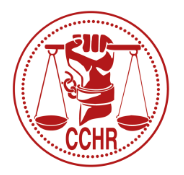
Pharmaceutical Giants are big on public relations campaigns. Millions of dollars are being spent to convince parents that childhood depression, bipolar, ADD and ADHD are dangerous mental illnesses that only their drugs can “fix.”
A child who exhibits any emotion (grief, anger, even cheerfulness) may be suspected of childhood depression or bipolar. Nowadays a diagnosis of mental illness is more common than a diagnosis of measles forty or fifty years ago.
These mental illnesses are concocted by Big Pharmaceutical companies and their minions, the psychiatrists. The men and women who work in these industries are guilty of the worst kind of child abuse. Their living is based on the misery of others. Their “product” is a child who has lost his or her future hope, happiness and the possibility of a productive and creative life. Their “treatment” may even claim the life of that child.
Children who are treated early with these damaging pharmaceuticals grow up with side effects that may be falsely attributed to their “disease.” Parents, convinced their children will suffer if taken off the drugs, help create a life-long dependency.
In a society where even a family meal may be a rare thing, parents may sadly buy into the false advertising that drugs will “fix” their child’s mood swings or upset. They may decide that Jenny isn’t crying because she lost her rabbit. No, she probably has childhood depression.
And why wait for excessive energy or mood swings to go away when there is a magic pill to help? Childhood depression is a dangerous condition (they say), and only their “treatment” can cure it.
What does this treatment do to the brain of a developing child?
It has been proven that antipsychotic drugs taken over a long period of time cause brain shrinkage. Researchers in a study published in the Archives of General Psychiatry stated:
“Given the sharp rise in antipsychotic utilization, especially among geriatric and pediatric populations, examining the possibility of antipsychotic brain tissue loss has important implications for assessing the risk benefit ratio in a large number of psychiatric patients.”
Children have been killed by these pharmaceutical drugs. Two children, barely out of toddlerhood died from psychiatric drugs for their “bipolar” disorders. Rebecca Riley of Massachusetts (four years old) and Destiny Hager of Kansas (three years old) were killed in 2006 from dosing of psychiatric drugs Geodon and Seroquel.
The outrage against psychiatrists and their deadly drugs is awakening parents everywhere. A father or mother who has tragically lost a child (or had a child severely damaged) by one of these dangerous drugs at least has recourse to sue the psychiatrist or pharmaceutical company responsible.
But that does not bring back their child, or even prevent these legal child abusers from continuing their criminal practices. Word of mouth is a powerful thing. When you are aware of the danger, and spread the news to those you love, the easy profits of psychiatrists and pharmaceutical companies will start to dry up.
http://www.opednews.com/articles/Is-Your-Child-Mentally-Ill-by-Martha-Rosenberg-120928-313.html
http://articles.latimes.com/2011/feb/07/news/la-heb-antipsychotic-drugs-020711
Free Baker Act Help - Call Us: 800-782-2878
info@cchrflorida.org


What’s happening is a truly terrible thing. Unfortunately it’s very hard to convince someone diagnosed with ADHD by a man with a MD that amphetamine is a scam treatment for an illness fabricated to sell amphetamine, among other things, to children for profit.
However, as far as antipychotics go, there is actually a diagnostic test to prove the medication is causing (neurodegenerative shrinkage) structural changes in the patients brain. It’s called an MRI, and these brain volume changes show up after just 6 weeks of use. No antipsychotic drug is licensed to be used beyond that period.
They are somewhat well studied and believed to be responsible for whatever feedback mechanisms have caused 50% of schizophrenics (in a 2000-2004 study called the C.A.T.I.E study) to suffer from a drug induced psychosis characterized by a higher rate of hospitalizations for psychotic episodes then historical (and current) placebo groups.
All parents need to do is take the publications to a neurologist, and they now have enough evidence to win a full lawsuit. Objective evidence defeats subjective evidence in court.
[1] * Antipsychotics implicated in structural changes*
1) Am J Psychiatry. 1994 Oct;151(10):1430-6.
http://www.ncbi.nlm.nih.gov/pubmed/7916539
(quetiapine)
2) Psychol Med. 2009 Nov;39(11):1763-77. Epub 2009 Apr 2.
http://www.ncbi.nlm.nih.gov/pubmed/19338710
(Grey matter)
3) Eur Neuropsychopharmacol. 2009 Dec;19(12):835-40. Epub 2009 Aug 29.
http://www.ncbi.nlm.nih.gov/pubmed/19717283
4) Arch Gen Psychiatry. 2011 Feb;68(2):128-37.
http://www.ncbi.nlm.nih.gov/pubmed/21300943
(white matter)
[2]*Antipsychotics implicated Structural changes and clinicaly significant *
1) Am J Psychiatry. 1998 Dec;155(12):1711-7.
http://www.ncbi.nlm.nih.gov/pubmed/9842780
2) Int J Neuropsychopharmacol. 2011 Feb;14(1):69-82. Epub 2010 Aug 12.
http://www.ncbi.nlm.nih.gov/pubmed/20701823
3) Neurosci Biobehav Rev. 2012 Aug 10. [Epub ahead of print]
http://www.ncbi.nlm.nih.gov/pubmed/22910680
4) Schizophr Res. 2012 Feb;134(2-3):165-70. Epub 2011 Dec 16.
http://www.ncbi.nlm.nih.gov/pubmed/22177349
5) Expert Rev Neurother. 2011 Jul;11(7):943-6.
http://www.ncbi.nlm.nih.gov/pubmed/21721911
6) Arch Gen Psychiatry. 1998 Feb;55(2):145-52.
http://www.ncbi.nlm.nih.gov/pubmed/9477928
[3] *Atypicals Indicated in structural changes (and possible cause of pathology)
1) Neuropsychopharmacology. 2005 Apr;30(4):765-74.
http://www.ncbi.nlm.nih.gov/pubmed/15702141
2) Cereb Cortex. 2009 May;19(5):1107-23. Epub 2008 Oct 8.
http://www.ncbi.nlm.nih.gov/pubmed/18842668
[4] * Reversal of structural changes with discontinuation *
1) J Clin Psychopharmacol. 2011 Apr;31(2):146-53.
http://www.ncbi.nlm.nih.gov/pubmed/21346618